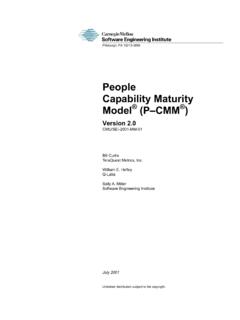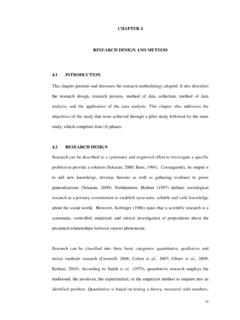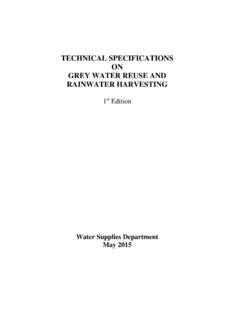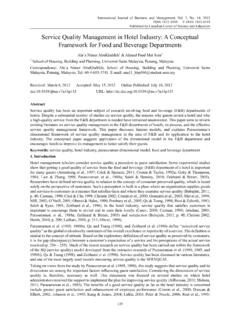Transcription of Growth Assessment Protocol (GAP) Guidance
1 Growth Assessment Protocol (GAP) Guidance November 2020 2 CONTENTS 1. Introduction 2. Elements of GAP Training and accreditation Protocols and Guidelines GROW charts Recording outcome and benchmarking Missed case audit Links to GAP service level agreement 3. GAP Care Pathway Introduction Phase I pathway Phase II pathway Risk Assessment Fetal Growth surveillance Further investigation and management Audit of detection rates and missed cases Conclusion Next Steps References 3 1 | INTRODUCTION The Perinatal Institute provides the Growth Assessment Protocol as a licensed and supported service to assist clinicians and their health organisations with the Assessment of fetal Growth .
2 This priority has arisen from evidence that many adverse outcomes in maternal and perinatal care are associated with unrecognised fetal Growth problems, and can be prevented by improved awareness and detection of the pregnancies affected. This document should be read in conjunction with the GAP service level agreement which sets out the proposed partnership between the PI s GAP team and each organisation s champions / leads tasked with implementating and running the programme. A recent, award winning analysis of Office of National Statistics (ONS) data has emphasised the benefits of thorough implementation and adherence to GAP Protocol on stillbirth prevention [1].
3 Here, we summarise the main components of GAP, and present the Care Pathway with evidence based guidelines which can be adapted into local protocols. 2 | IMPLEMENTATION OF THE GAP PROGRAMME The main components of GAP are training, protocols, Growth charts, benchmarking and missed case audit. Training and accreditation of all staff involved in maternity care Face to face training and remote workshops on all aspects of theory as well as practice including standardised fundal height measurements, ultrasound and Doppler parameters, generation and plotting on customised charts, early pregnancy risk Assessment and referral pathways, and data collection and audit.
4 This is supported by e-learning with theoretical and practical modules, which include a short theoretical Assessment and provision of an e-certificate. A designated e-learning lead/administrator can be given access to local e-learning accounts and compliance reports. Adoption and local adaptation of Growth Assessment protocols and guidelines Includes the GAP Care Pathway, with early pregnancy booking risk Assessment , triage for low risk care through serial fundal height measurement , and indications for referral; and increased risk care, obstetric review, serial Growth scans with Assessment of size as well as Growth rate, and appropriate additional Doppler investigations and implications for management.
5 4 Implementation and training in use of customised GROW software Provision of GROW-App, (stand-alone or integrated with hospital electronic record), for plotting measurements of standardised fundal height (SFH) and estimated fetal weight (EFW). The Growth chart is customised for constitutional variation (ethnic origin, maternal size, parity) and optimised by excluding pathological factors ( high BMI, smoking), thus improving the ability to identify abnormal Growth while reducing false positive diagnoses. Recording pregnancy outcome and generating reports on progress The software prompts the recording of key indicators following delivery of the baby, including the birthweight centile and, if SGA, whether it was detected antenatally.
6 The false positive rate is also calculated. Standardised unit-specific reports are generated for local feedback and benchmarking against a baseline (established before GAP was implemented) to assess progress and compare with national GAP user average. Missed case audit Software and training is also provided to allow clinicians to undertake a standardised clinical outcome review and evaluation (SCORE) of their SGA deliveries that were not recognised antenatally. GAP leads are encouraged to undertake this regularly on a proportion of cases, to check for avoidable factors such as failure to follow risk Assessment Protocol , inaccurate measurement or plotting, lack of referral for investigation, etc.
7 Further information is available in the GAP service level agreement: Annex A Key responsibilities - sets out the respective roles and responsibilities for the Perinatal Institute and the local health service to ensure effective implementation and running of the GAP programme. Annex B Help Desk Services - outlines the support that hospitals and individual users can expect when assistance is required from the Perinatal Institute, including clinical and technical helpdesks. Annex C GROW Software, data Items and user accounts - provides details of the various software and user accounts available to support the programme, including Growth charts with API links to information systems, audit tools for benchmarking and missed case review, and individual (clinical) and bulk (research) centile calculators.
8 5 3 | THE GAP CARE PATHWAY Introduction Following publication in 2019 of NHS England s Saving Babies Lives Care Bundle version 2 (CBv2) [2], the Perinatal Institute has undertaken consultations on aligning it for NHS Trusts in the GAP programme, while maintaining the benefits of a tried and tested Protocol that has been credited as a main contributor to the reduction of stillbirth rates in England [1, 3, 4, 5]. Our care pathway seeks to balance the need to identify, investigate and appropriately manage at-risk pregnancies with the aim to avoid unnecessary intervention. It continues the emphasis on surveillance according to risk Assessment , by standardised fundal height (SFH) and estimated fetal weight (EFW) measurements, serially plotted on customised charts to improve the distinction between constitutional and pathological smallness [6, 7, 8, 9].
9 A focus of the revised pathway is a new, evidence-based definition of slow Growth (see Section B). Concerns about the ultrasound and Doppler capacity demands of CBv2, expressed at the 2019 National GAP User Symposium, have been confirmed by a survey we conducted in association with the British Medical Ultrasound Society (BMUS), which showed that most ultrasound services in the NHS cannot currently meet the requirements [10]. The Society of Radiographers have also expressed concern [11]. We have therefore developed a Care Pathway which can be implemented in two phases, according to maternity unit capacity.
10 Phase I should be achievable with current resources, while sonographic services seek to acquire the additional training and resources required for Phase II. These Explanatory Notes are designed to be read in conjunction with Care Pathway algorithms I and II. Disclaimer: We have made this Guidance as evidence based as possible. It is intended to supplement, not substitute maternity care, which needs to be personalised and based on good clinical judgement. The Perinatal Institute and its staff cannot be held responsible for any adverse outcome. 7 8 Risk Assessment 1. Early pregnancy risk Assessment and triage into the correct care pathway is essential.







